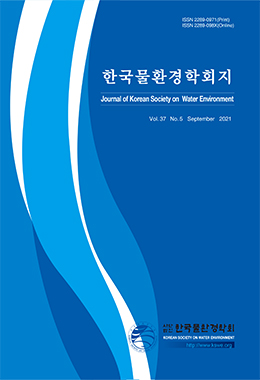Off-flavor materials (geosmin and 2-methylisoborneol (2-MIB)) produced by microorganisms, such as, cyanobacteria and actinomycetes, cause freshwater use problems worldwide. Due to unpleasant taste and odor, these microorganisms have raised issues especially in drinking water resources. Recently, there has been increasing concern about 2-MIB and causal cyanobacteria, namely, Pseudanabaena, in Korea. However, material production and ecological dynamics remain largely unexplored. This study reviewed the distribution of Pseudanabaena, its species diversity, and the research trend of molecular ecology related to 2-MIB production in Korea. Based on published literature, we found that seven species of Pseudanabaena which include P. mucicola, P. limnetica, P. redekei, P. catenata, P. galeata, P. yagii, and P. cinerea appeared to occur in a variety of Korean water systems. All of these Pseudanabaena species were found in the North-Han River system (Lakes Soyang, Chuncheon, Uiam, and Paldang). Some of these species were also detected in other watersheds, but the precise species diversity was not identified. Species belonging to the Pseudanabaena genus are hard to classify through general microscopic alpha taxonomy, due to their very small cell size and similar morphological characters. Moreover, the potential of 2-MIB production cannot be detected by microscopic observation. Combining molecular ecological techniques, such as, environmental genomic materials (eDNA, eRNA) analyses to conventional methods could be useful to better understand the off-flavor material production and dynamics, thereby providing more efficient management strategies of freshwater systems.


